How does the double-the-distance aiming system work?
It is described an demonstrated in detail, along with other common aiming systems, in How to Aim Pool Shots (HAPS). See also: in “Aim, Align, Sight – Part I: Introduction and Ghost Ball Systems” (BD, June, 2011). Here’s a useful illustration from the article:
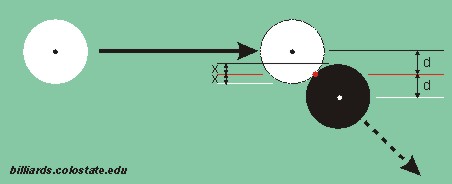
Here’s how it works:
- Visualize the distance “d” from the center of the OB to the desired CP on the OB.
- Double this distance by adding it to the other side of the CP. This locates the required line of aim through the center of the GB.
For thinner cuts, it can be easier to visualize the smaller distance “x” from the CP to the outside edge of the OB, which is doubled to locate the inner edge of the GB relative to the CP.
An alternative way to double the distance and visualize the required aiming line is to visualize a line from the top of the OB through the CP to the table. For more info, see bottom-of-the-ball aiming.
The contact point between the CB and OB is always in the middle of the ball-overlap area. This is true of all cut angles, as illustrated in the cut angle template below from the cut angle estimation resource page:
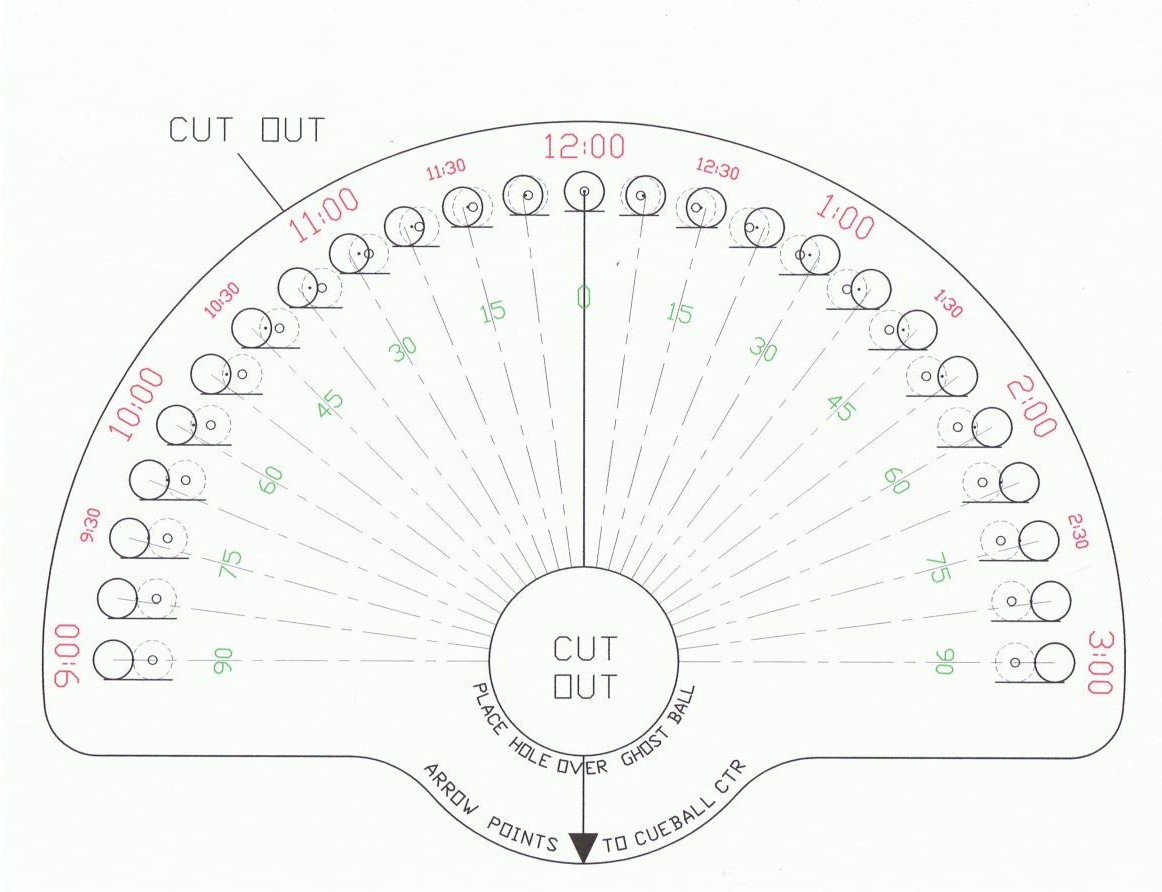
Here’s a document from Don Smith showing the results of sighting through the center of the CB (or any other point), instead of along parallel lines. With non parallel sighting, the system doesn’t work well when the CB is close to the OB, but it works fine when the balls are farther apart, for all cut angles. Jal has also done an analysis of the error with plots. See the document for more info and examples, including how to use your cue tip to help.
from Patrick Johnson:
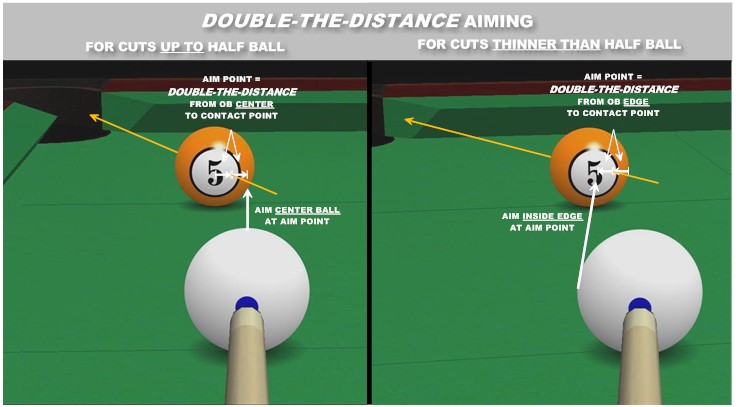
Variously called “double-the-distance”, “double-the-overlap”, etc. It came up often in discussions of aiming systems because it’s one of the few “geometrically correct” systems (like ghostball).
from Slide Rule:
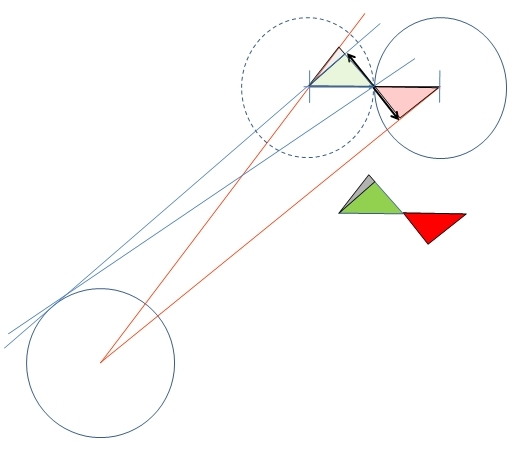
Double the Distance
Construct a triangle between the centers of Object Ball, Cue Ball and the Image Cue Ball in contact with the Object Ball. See a line 90° from the Object Ball to the contact point (side distance as viewed from the Cue Ball). They make up two triangles that appear to be congruent (equal sides, equal angles). In order to be congruent the red and green triangles need to be equal.
A small gray triangle represents the error. For the red and green triangles to be equal the lines drawn from the cue ball to the centers of the object ball and virtual cue ball at contact would have to be parallel (which they are not). There is a small error inherent to the method. The method may be a good enough as first order approximation for distances sufficiently far from the object ball (about 1 diamond) or for cases where the cut angle is sufficiently small. Note that the following diagram shows a relatively severe cut shot. The error may be sufficient to cause a missed shot due to hitting the object ball slightly too full.
Of Significance is the Error at Extreme Cut
The relatively small dark triangle is the error. The significant part is in noting that as the cut becomes thinner, the error increases. If you are using double the distance here, I think some sort of correction is required.
from heater451 (via e-mail):
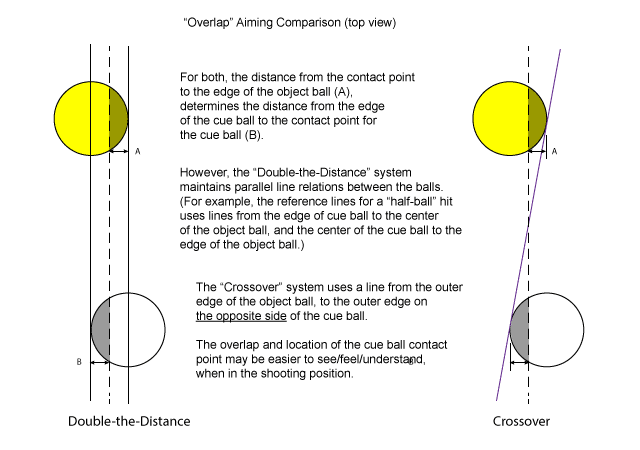
from Kurt Wilkie (via e-mail):
I stand behind the cue ball and aim top/center of the cue ball to the top/center of the object ball. Then I step until top/center of the cue ball is aimed at the object ball contact point. This step is sometimes very small (full hit), sometimes very big (thin hit). Then I take a second step that duplicates my first step, which gets my cue ball center lined up along the required aiming line.
I found that instead of imagining the 3 lines, when I stepped from one to the next, I could ‘feel’ how the steps differed among various shot angles, like you do in the Rollie video with the three-times-the-angle draw system!
What I like most is that it is a Step 1,2,3 system, which gets my mind off everything else. So not only is it a physical aiming system, it helps my head too. My inner voice, on a hard-to-aim important shot with people watching is, “just focus on the three steps, the system will work.”
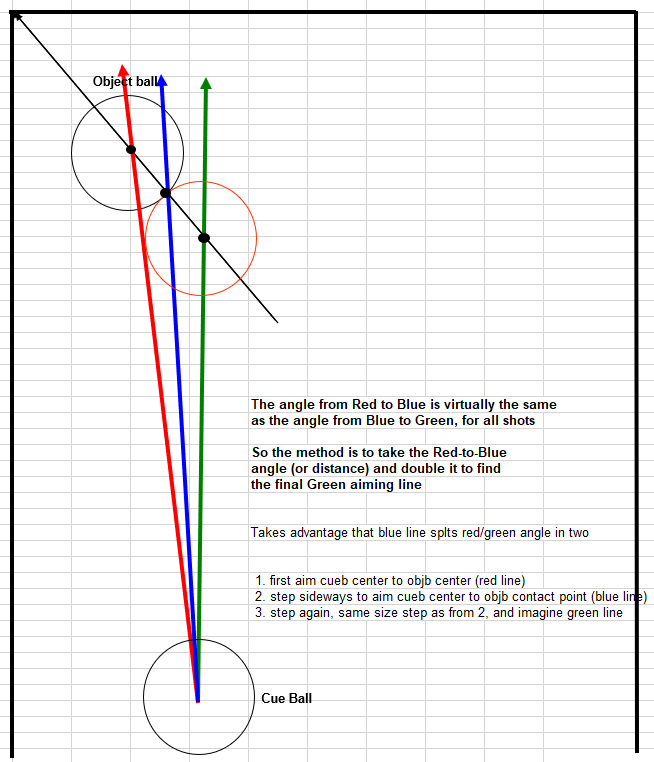
Dr. Dave keeps this site commercial free, with no ads. If you appreciate the free resources, please consider making a one-time or monthly donation to show your support:
